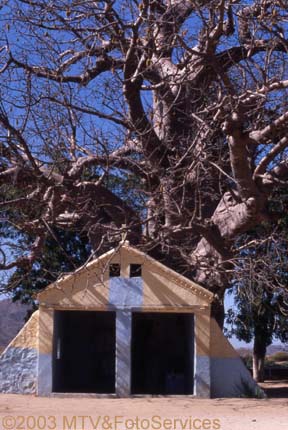
Keren is 90km north of Asmera. Set on a samll plateau at 122m above sea level,and surrounded by mountains, it is one of Eritrea´s most attractive towns. Trade thrived once Keren was connected to Asmera by the old Italian railway, and the litttle town grew. Today, it is the third-largest town in the country and is still an important center of commerce. The center of Keren is marked by the Giro Fiori (Circle of Flowers) roundabout. Keren is home to a number of graveyards. The British War Cemetery lies off the Agordat road north-west of town. In it, 440 Commonwealth troops lie buried, including the Hindu soldier Subadar Richpal Ram of the Sixth Rajputana Rifles, who was posthumously awarded the Victoria Cross, Britain´s highest military decoration for bravery.
Just past the cemetrery, a small statue of the Madonna watches over the road from Agordat in the west. The well-tended Italian Cemetery lies close by, and if one continues on foot a further 20 minutes, one comes to the shrine of St Maryam Dearit, 2.3km out of town. On 29 May every year, there´s a pilgrimage to the site, and hundreds of people congregate to dance and sing.